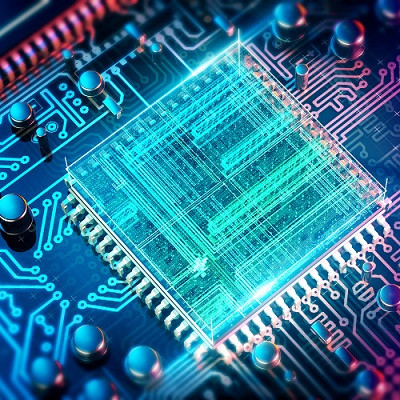Research in battery chemistry is getting a boost from quantum computing that in turn is furthering research to improve quantum computing.
Scientists from IBM and Mitsubishi Chemical have simulated the initial steps of the reaction mechanism between lithium and oxygen in lithium-air (Li-air) batteries. It’s the first research of its kind to have been simulated on a quantum computer as outlined in a paper recently published on arXiv, Computational Investigations of the Lithium Superoxide Dimer Rearrangement on Noisy Quantum Devices, and it lays the groundwork for modeling the entire lithium-oxygen reaction on a quantum computer. Understanding the underlying mechanism of the Li-air battery chemistry could lead to significantly more efficient batteries for everything from mobile devices to cars.
The capabilities of quantum computing were being tested as well. Specifically, the Variational Quantum Eigensolver algorithm was used to perform computational investigations on the rearrangement of the lithium superoxide dimer with both quantum simulators and quantum devices. While the research demonstrated that quantum simulators could obtain energy values similar to the exact ones, the calculations on quantum hardware underestimated energies — even after the application of readout error mitigation.
Mitsubishi Chemical was already tackling the problem with classical computing before approaching IBM, said Dr. Gavin Jones, IBM Q Ambassador and a Research Staff Member in the Quantum Applications in Chemistry and Science group at IBM Research - Almaden. The problem is that such a large chemical system requires more qubits (quantum bits) than there is room for in any of IBM’s quantum computers.
“We needed to figure out a way to actually reduce the number of qubits down to some level where we could actually use a quantum computer or quantum simulators to study the problem,” Jones said.
The research paper outlines the qubit reductions and the use of quantum simulators as well as quantum hardware to study the problem, and then checks the accuracy of the simulators and the calculations being done on the quantum hardware, said Jones. “We showed that with simulators we could do this really, really accurately.” However, once the research team moved on to the quantum hardware, which is noisy and prone to decoherence errors, the reactant energy was underestimated. “We want to be able to use much better methods to study this process, so we can get better answers.” Better hardware goes together with that, he said, and in turn drives the need for better software.

Molecular structures of focus in Computational Investigations of the Lithium Superoxide Dimer Rearrangement on Noisy Quantum Devices, as part of the process of lithium peroxide formation (Source: IBM Research)
A functional battery relies on lithium dioxide, but lithium peroxide can form instead. The goal of studying the battery from the electrochemical perspective is to reduce the formation of undesirable lithium peroxide. It may take years to be able to study the entire problem with quantum computing, said Jones, but ultimately it will help researchers understand how to prevent lithium peroxide formation.
“Maybe we could add something in, some sort of additive that will prevent that from happening. Maybe there's something else that we can do — from an electrochemical perspective — that could improve that,” Jones said.
Li-air battery research collaboration between industry and academia goes back to the mid-1990s, said Dr. Naoki Yamamoto, associate professor and the chair of the Keio University Quantum Computing Center, which is part of the IBM Q Hub. “Because both the charge and discharge process in the lithium-air battery are very complicated and sensitive to the surrounding environment, it is still hard to elucidate the reaction mechanism at the atomic level, which [has] limited the progress of the technology.”
Prior to turning to quantum computing, he said, reactants in the initial steps of the charge and discharge process were modeled using small lithium-oxygen molecular clusters, and the reaction mechanism was studied by using a classical computer. “These new study results accurately predict the reaction surface, but the density functional theory — which is a widely-used approach — is not good enough.” This means a much higher level of quantum mechanical theory is needed in order to accurately predict the properties of the Li-air battery using a computational approach, said Yamamoto, but such theory adds significantly to the computational expense of calculations on classical computing.
This year, researchers have been able to study the initial step of the charge process in the Li-air battery on a real quantum computing device. The results to date — combined with the anticipated improvement of quantum volume in the next few years — could make it possible to examine specific properties of the Li-air battery. So far, he said, the researchers have been able to more accurately measure reactant energy in a Li-air battery by studying it on a real quantum computing device. Reactant energy had previously been underestimated by about 20 kcal/mol in real device, and the researchers were able to reduce that value to about 6 kcal/mol. The next step is to further reduce the value of underestimation calculated with the real device to less than 1 kcal/mol.
In Japan, said Yamamoto, there are some large industry-academic projects in progress for bringing the technology of the Li-air battery to the market. However, there remains significant work ahead in materials science to make an efficient battery. “I hope quantum computing can help us effectively explore such new materials in the near future.”
Read the original article on EE Times.
